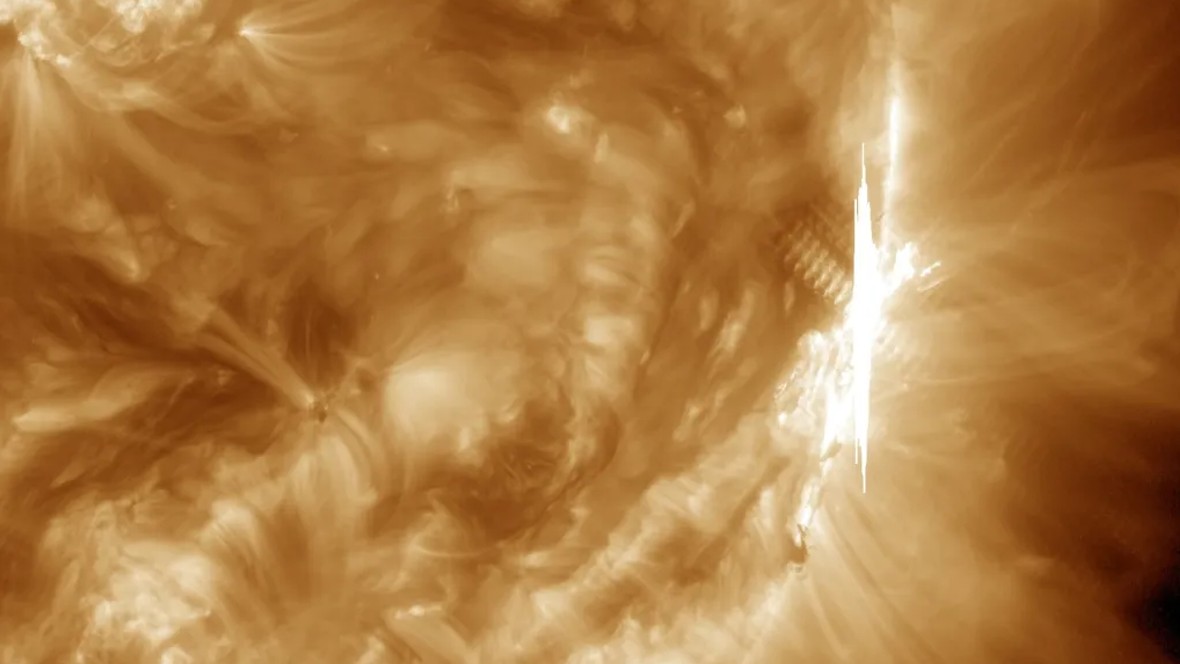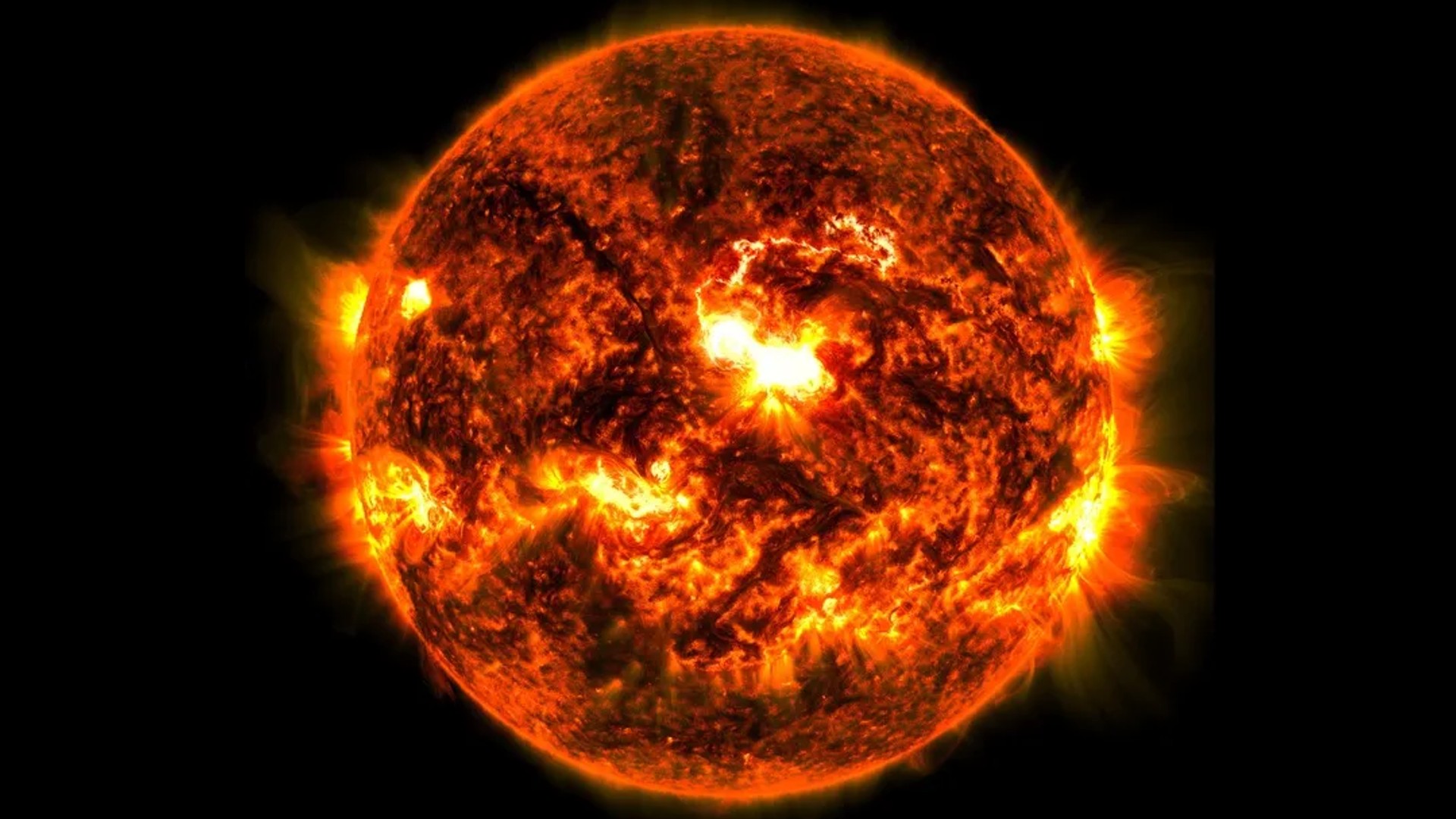
Update for Oct. 11: The severe G3 geomagnetic storm has sparked dazzling auroras around the world for skywatchers. Read our full story and see northern lights photos from Space.com readers.
A severe solar storm sparked by an intense flare from the sun could reach "extreme" levels as it bombards Earth, officials with the U.S. National Oceanic and Atmospheric Administration (NOAA) warned on Thursday (Oct. 10).
Scientists with NOAA's Space Weather Prediction Group (SWPC) said that a cloud of charged solar material, called a coronal mass ejection, slammed into Earth around midday, triggering a "severe" geomagnetic storm that could impact power grids and GPS and radio communications systems, as well as amplify aurora displays in regions that typically don't see them.
"When skies are clear, the aurora (northern lights) could be visible as far south as Alabama and northern California tonight," SWPC officials wrote in an update.
The coronal mass ejection, or CME, from the sun reached Earth at 11:17 a.m. EDT (1517 GMT) and triggered a severe G4-class geomagnetic storm by 12:57 p.m. EDT (1657 GMT), SWPC officials said in an update. And it may not be done yet.
"There is still a possibility that we could reach G5 (Extreme) levels," SWPC officials wrote in the update, adding that the solar storm will continue into Friday (Oct. 11).
Of particular concern are the potential impacts to infrastructure on Earth, which can be affected by radio blackouts and other interference associated with severe geomagnetic storms. In 1989, for example, a massive solar storm triggered a widespread blackout across parts of Canada and some northeastern U.S. states, SWPC officials said.
Some states like North Carolina and Florida, which are already experiencing widespread power blackouts from the effects of Hurricane Helene and Hurricane Milton, may be more at risk from the solar storm, NOAA officials warned.

"The storm could put additional stress on power grids already weakened by the hurricanes," SWPC officials wrote. "SWPC has already updated FEMA and several state agencies involved in recovery operations."
Thursday's G4 geomagnetic storm watch was only the second issued by NOAA SWPC officials since 2005 and follows a similar event in May of this year. In that May event, a series of massive solar flares sent multiple CMEs toward Earth, triggering spectacular northern lights displays as far south as Alabama. Similar effects on auroras were possible for the current storm, SWPC officials said in an Oct. 9 press conference.
The CME that triggered Thursday's G4 geomagnetic storm was associated with an X1.8-class solar flare that erupted from the sun. That flare is one of several X-class flares that the sun has unleashed in the last week, including a massive X9 flare on Oct. 3. On Thursday, the sun fired off an X1.4 flare, showing that it's still not done with stormy weather.







